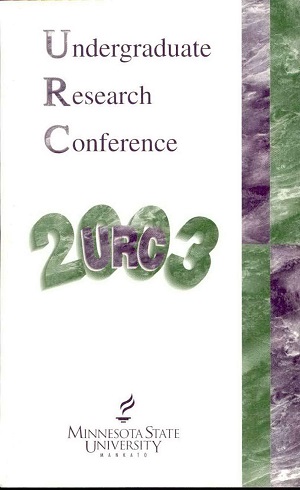Optimal Precipitation of Organotin Fluorides by Cation Exchange
Location
CSU
Student's Major
Chemistry and Geology
Student's College
Science, Engineering and Technology
Mentor's Name
Brian Groh
Mentor's Department
Chemistry and Geology
Mentor's College
Science, Engineering and Technology
Description
Organotin halides account for 10% of tin consumption worldwide. Known for their biocidal activity, trialkyltin compounds are the active components of agricultural fungicides and paint preservatives. Halogenated organotins and their derivatives have wide application and use in research and industry, and their use continues to grow. However, organotins are highly toxic compounds, often formed as by-products in reactions. Consequently, the removal and recycling of organotin halides from the waste stream is imperative. The focus of our research is the development of a cyclic reaction sequence to remove and recycle organotin halides. Treatment of soluble tributyltin chloride with fluoride ion causes the precipitation of tributyltin fluoride. We have examined the effects of substrate, solvent, time, and cation exchange to optimize removal of the precipitated compound from solution. In our process, it is then possible to convert tributyltin fluoride back to tributyltin chloride, the precursor of many organotin compounds used in industry.
Optimal Precipitation of Organotin Fluorides by Cation Exchange
CSU
Organotin halides account for 10% of tin consumption worldwide. Known for their biocidal activity, trialkyltin compounds are the active components of agricultural fungicides and paint preservatives. Halogenated organotins and their derivatives have wide application and use in research and industry, and their use continues to grow. However, organotins are highly toxic compounds, often formed as by-products in reactions. Consequently, the removal and recycling of organotin halides from the waste stream is imperative. The focus of our research is the development of a cyclic reaction sequence to remove and recycle organotin halides. Treatment of soluble tributyltin chloride with fluoride ion causes the precipitation of tributyltin fluoride. We have examined the effects of substrate, solvent, time, and cation exchange to optimize removal of the precipitated compound from solution. In our process, it is then possible to convert tributyltin fluoride back to tributyltin chloride, the precursor of many organotin compounds used in industry.



